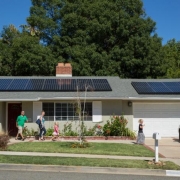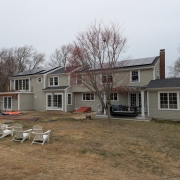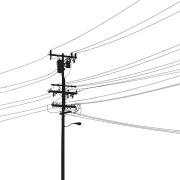Solar power emerges where oil and gas once dominated
By Ryan Maye Handy
June 13, 2017
Read the original article Here
When oil prices tanked two years ago, hundreds of Pecos County workers lost jobs working at oil and gas companies in the prolific Permian basin. Last year, the rural county lost around 20 percent of its $2.5 billion tax value.
But the unemployed residents weren’t out of work for long. Most of the 300 to 400 oil field workers found jobs installing solar panels beneath the hot and abundant West Texas sun.
All told, the projects, including two likely to get underway within the next few years, are expected to add hundreds of millions of dollars to the tax base of the county, where solar panels stand on the same property as gas flares and drilling rigs.
“It’s a great marriage,” said Doug May, the executive director of the Fort Stockton Economic Development Council in the county.
Pecos County, which has only three people in each of its 5,000 square miles, has become a hub for utility-scale solar power. Across the nation, solar farms are poised to become a boon for rural economies that have been hard hit by the decline of industries such as agriculture, manufacturing and coal, as well as the boom-and-bust cycles of oil and gas.
In North Carolina, for instance, farmers lease fallow land to solar panel companies; in West Texas, counties like Pecos, once reliant on oil and gas extraction, are diversifying through solar and wind power.
Utility-scale projects are eligible for a state tax abatement – up to 80 percent for 10 years – an incentive that has drawn projects to places like Pecos County. Texas’ utility-scale installations, at around 783 megawatts, are expected to double in Texas this year, according to the Solar Energy Industries Association, a national trade group.
Beyond abundant sunshine, the county’s other draws are its many transmission lines that feed into the electric grid that serves the state’s population centers. More transmission lines are expected to be added in 2019 and 2020, likely driving another burst of solar installations, May said.
If that happens, solar power will exceed the county’s 700 megawatts of wind energy. In addition, solar companies will employ locals even as the price of oil remains stubbornly below $50 a barrel.
“It has basically helped to compensate for the boom and bust cycle,” said Colin Meehan, the director of regulatory and public affairs for Houston-based First Solar, which has two solar farms in Pecos. “They see it as just another source of revenue.”
Pecos is a model of how rural counties can benefit from renewable energy, said Helen Brauner, the director of origination strategy for 7x Energy, an Austin-based utility-scale solar company. In Austin on Tuesday, Brauner and other solar executives gathered at a conference hosted by the Solar Energy Industries Association.
“The typical 100-megawatt solar project should give the county about $30 million in property tax revenue” over the duration of the project, Brauner said.
The conference attendance nearly doubled this year to more than 400, a sign that Texas is primed for more investment in solar, conference organizers said.
Nonetheless, the growth of utility-scale solar in Texas suffered a setback in April of last year when Sun-Edison, the world’s largest renewable energy developer, filed for bankruptcy, delaying two major projects.
In September, Houston-based NRG Energy bought one the projects, the 154-megawatt Buckthorn solar farm in Pecos County. When the project is done next year, its sole customer will be Georgetown, a city of about 60,000 north of Austin.





